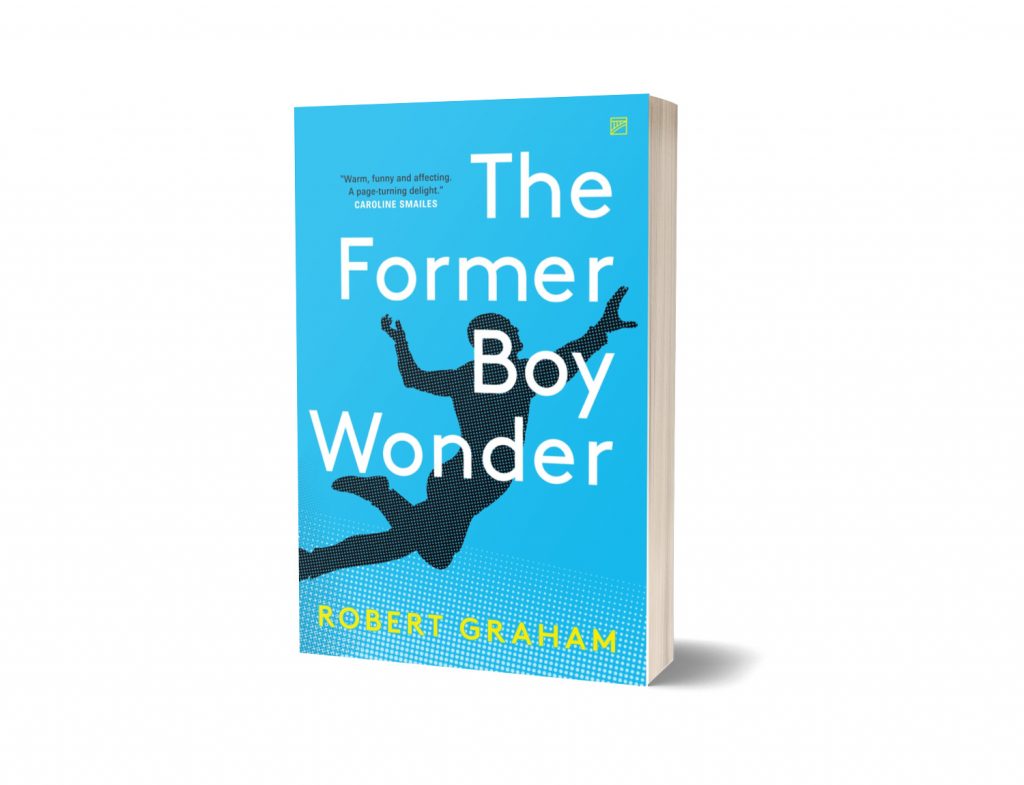
It’s a rainy August in Manchester and music writer Peter Duffy’s life is falling apart. He’s knocking on fifty, his career is flatlining, his marriage is failing, and his teenage son barely speaks to him.
And then a friend from university days invites him to a party at the manor house where he met his first love, the dazzling Sanchia Page. All the old gang are going to be there, and although it’s a long shot, maybe she will, too, which wouldn’t be helpful. Or would it?
Robert Graham writes exclusively for Ink Pantry on the theme of setting in The Former Boy Wonder (Lendal Press):
In The Former Boy Wonder, I set out to use setting to characterise and to create emotional tone.
In the narrative strand that happens when he’s young, Peter Duffy, the novel’s protagonist, meets and falls for another student, Sanchia Page. The allure of the novel depends greatly on my portrayal of her. I wanted her to have a mystique, to be attractive to the readers, bewitching and magical, and aimed to make her a full-blown romantic heroine. Part of the way I characterised her was through setting. Before I introduce her, the setting includes only positive details. As Peter makes his way to the party where they will meet, I mention the pale, warm sun. Autumn mist hangs over the road. Two lanterns mark the bottom of the drive that leads up to Loston Manor, the mansion where the party will take place, and he arrives in the last of the evening sun. The necklaces of coloured bulbs that hang across Loston’s façade have a warm halo which glows in the evening light. Across the façade of the house, “necklaces of red, green and yellow bulbs hung on cables, and the warm halo of each glows in the early evening light”. On the way to his first sight of Sanchia, he walks by “a miasma of colour – red anemones, purple chrysanthemums, pink asters – passing rose beds to come and stand “beneath a fig tree in its sweet, coconut scent”.
Another setting I used to characterise Sanchia was her room in a student house-share. The books on her shelves (The Scarlet Letter, Vanity Fair, Dubliners, Bleak House, black-spined Russian classics, and grey-spined Penguin Modern Classics) and the contents of her desk (more books, sheets of paper filled with writing, notebooks, a pot of pens and pencils) indicate that she is a serious reader and a committed student. Reproductions on postcards of paintings by Toulouse Lautrec, Degas, Bonnard, Magritte and Chagall and photographic portraits of Marilyn Monroe, Doris Lessing and Mahler add to this, developing his impression that she is more cultured than he. Her record collection, which also sits on the floor, leaning against a wall – like her books, not on shelves, not conventional – includes jazz (Dave Brubeck’s Take Five) and classical (Bach’s Goldberg Variations). No pop, no rock, no rock’n’roll. She isn’t just a literary person, she knows about art, she knows about music. To Peter, her taste is unusual, which is exciting, but also eye-opening. Although he’s an Art student and a reader, she is more well-rounded than he, and, he thinks, much more sophisticated. Exotic, serious, well read, cultured, sophisticated – and all conveyed to the reader through the use of setting.
Settings loom large in The Former Boy Wonder and some of the time I used them to create emotional tone. The love affair between Peter and Sanchia ends in Morecambe and to create the emotional tone I included only negative details of the setting. A few hours before they break up, they eat in a cheap Italian restaurant, and the setting is designed to create a particular emotional tone. Their waiter wears a greying white shirt and a greasy black tie, the cook, an Iron Maiden T-shirt, a skull ring, and boots with chrome studs. I mention the sweating cheese of the pizzas the down at heel waiter sets before them. The emotional tone of this Morecambe chapter doesn’t come from me telling the reader that it’s a bleak, melancholy, miserable place. No. The tone, I hope, is made real for the reader because it is suggested by the specific details and the vocabulary I chose.
For me, setting is almost as important as character or plot, and if The Former Boy Wonder affects readers in any way, I believe that that’s achieved by using the houses, streets, and rooms the cast of the novel live in to characterise them and to create emotional tone.

With special thanks to Isabelle Kenyon from Fly on the Wall Press.
